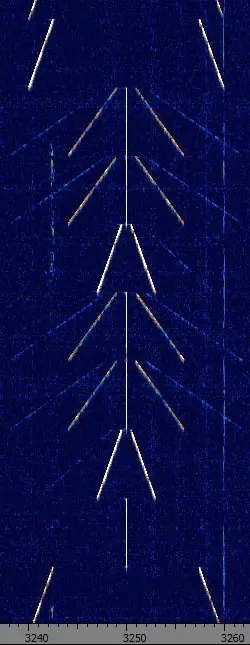HAARP, or the High Frequency Active Auroral Research Program, is a former US military ionospheric research facility that is now owned by UAF (University of Alaska Fairbanks) as of August of 2015. It’s located in Gakona Alaska, near the Tok Cutoff. This massive and impressive facility is comprised of the HAARP control building and power plant, and its iconic array of 180 high frequency antennas AKA the “Ionospheric Research Instrument” or the “IRI” along with other research instruments around the property. The facility was first established in 1993, and the HAARP array was constructed over time in 3 phases.
The Developmental Prototype was comprised of only 18 antennas, 6 rows with 3 antennas per row. This prototype was only fed 360 kilowatts (kW) of power and was only capable of basic ionospheric testing. Then came the Filled Developmental Prototype that was comprised of 48 antennas, 8 rows with 6 antennas per row. The updated prototype has drawn 960 kW of power. This version of HAARP was used for a number of successful scientific experiments and ionospheric exploration campaigns over the years up until 2007 when the final version of the array was built. The Final IRI is the current version of the HAARP array. There are no plans to expand the array any larger than it is.
The array of antennas are 12×15 per antenna that makes up a rectangular shape and stretches 30 and 40 acres wide. Each separate antenna is 72 feet tall with dipoles on each side per antenna that are around 35+ feet long. HAARP is a costly facility to run when it comes to operating the IRI. The IRI doesn’t run off the local power grid but runs on five 2500 kilowatt generators that are being driven by five huge, loud, fuel guzzling V20 diesel locomotive engines. These engines will take in 600 gallons of fuel in just one hour of max power which is 3.6 MW (Megawatts), and fuel is expensive. HAARP is known to be the most powerful and most effective radio transmitter for research on the ionosphere in the world.
HAARP of course doesn’t run constantly, it only runs 3-5 times a year. When scientists do run it, they will run it for four days to a week and a half with many breaks in between. This is called a “Research Campaign.” Run time varies depending on the centered research goal they are aiming for. One campaign has been known to go on for over a year. HAARP was active for ELF/VLF wave generation experiments between February 2007 and August 2008, immediately following completion of construction of the complete array of 180 antennas.
HAARP uses unique waveforms and harmonics on a centered carrier (Amplitude Modulation, or AM) and It shoots its transmissions into the upper portions of the atmosphere 70 to 350 km upwards where it excites a small portion of the ionosphere and creates (pretty much simulates) irregularities that are similar to the kinds of interactions that happen in nature. This is called HF heating, or ionospheric heating. When the IRI is turned off, the effects from the transmissions are swept away by the constant changes in the ionosphere in a matter of seconds. Natural phenomena are random and are often difficult to observe.
With HAARP, scientists can control when and where the perturbations occur so they can measure their effects. They can repeat experiments to confirm the measurements really show what researchers think they do. For each experiment, every transmission is different to achieve the experiment goal. One waveform is a sweeping CW (continuous wave) on a centered carrier that linearly increases or decreases (also called a ramp).
Another waveform is constant CW tones that increment up/down at select frequencies from the center carrier. There is also a waveform that is a hybrid of both ramp and tone called a “snake ramp.” Snake ramps are named this because the waveform creates a wavy, slithery carrier wave on the waterfall as shown in one of the waterfall examples. There are still other waveforms including fast carrier pulsing, slow carrier pulses, OTH (Over the Horizon) radar-like waveforms, unmodulated carriers (meaning nothing is being broadcasted on the carrier), and combinations of these selectivity together at a time.
If anything, HAARP sounds like a tone generator. The transmission’s harmonics are repeated for about 15 minutes to an hour at a time, most of the time to change frequencies and/or change transmission formats. The IRI array at HAARP has a broadcasting limit of 2.7 MHz to 10 MHz. These transmissions can be picked up on a Shortwave radio since Shortwave is on the HF bands and HAARP operates on the HF bands. The most popular frequencies that have been used in the past at HAARP are 2750 kHz and especially 3250 kHz. Other frequencies have been used multiple times but these two frequencies have been the most used as observed. Take note that other ionospheric stations have made “HAARP-like” transmissions in the past as well. Arecibo Observatory is one of them; which broadcasts on 5125 kHz and/or 8175 kHz during their HF heating campaigns. AM transmitter tests have used similar waveforms that HAARP uses as well. So, just because it sounds like HAARP, it doesn’t automatically mean that it is HAARP!
The first ever HAARP campaign conducted by UAF was on the 19th-23rd of February 2017, followed by the 2nd campaign on the 19th-25th of September 2017. The University of Alaska Fairbanks actually encourages the public to come and participate in the research campaigns through social media like Twitter. People can send signal reports with the signal’s strength, signal frequency, and the location the signal was received from.
Christopher Fallen, Assistant research professor in the University of Alaska Fairbanks Space Physics group and UAF Faculty Senate President, has created a blog page dedicated to HAARP campaign updates, pages about how to participate in said campaigns, and information about the facility. Chris also provides real-time updates when HAARP operating via his Twitter account @ctfallen. He keeps the participants up to date with frequencies, transmission formats, how much power is being drawn. Chris will also retweet participates’ signal reports. UAF has made an official HAARP twitter page (@uafhaarp) for basic information, giving results of the campaigns afterwards, and tweeting out news articles that have covered HAARP.
Author: Adam Correia @HAARPDXing2017
Station Summary
Name: High Frequency Active Auroral Research Program (HAARP)
Activity: Active
Emission Mode: Amplitude Modification (AM) Carrier Wave, Continuous Wave (CW)
Location: Alaska, USA
HAARP Samples
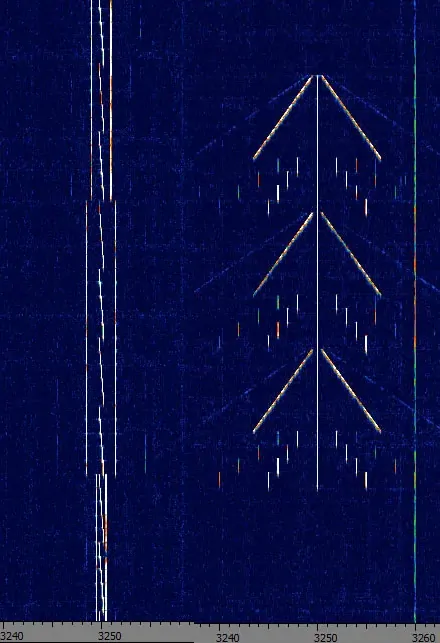
Waveform examples from http://www.solarix.net/tag/haarp/
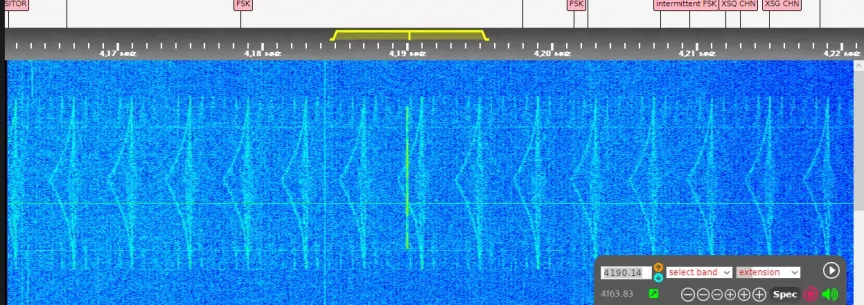
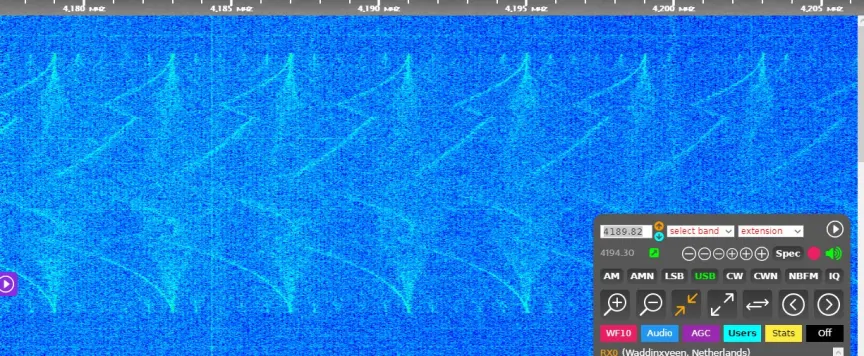

Waveform examples from the Sigid Wiki HAARP Page
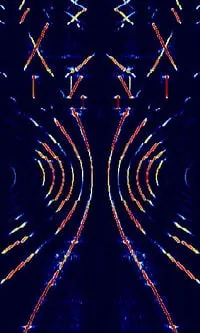 |
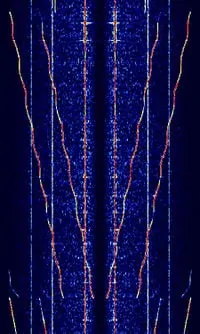 |
Video Recordings
Sources
University of Alaska – About HAARP
Stanford VLF Group – 100 days of ELF/VLF generation via HF heating with HAARP
Sigid Wiki HAARP Page
Gakona HAARPoon Operation News

